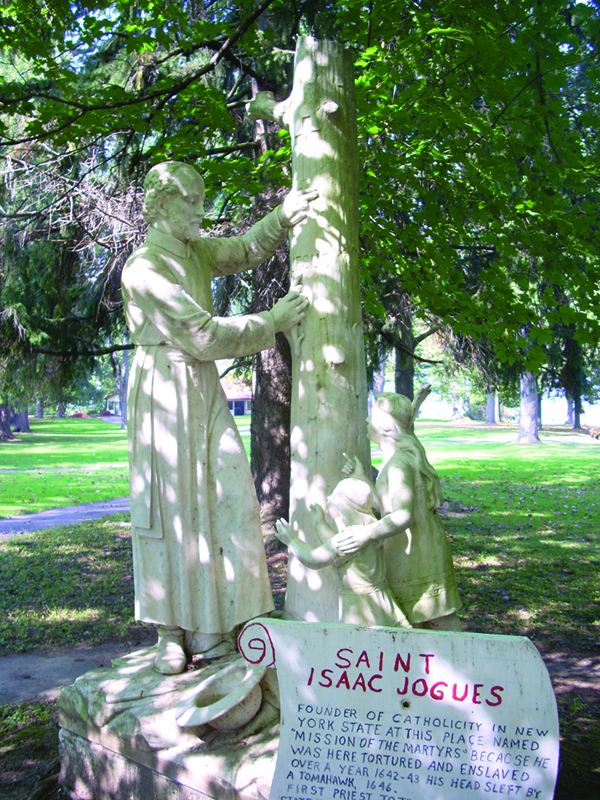
October saint: St. Isaac Jogues
Saints can resonate with us for several reasons. Sometimes their spirituality calls to something deep within us, prompting us to respond. At other times their challenges and life circumstances match our own in such a way that we feel we have found in them a sympathetic friend. And then sometimes we resonate with them because their story happened in a place we know very well. For Saint Isaac Jogues and his companions, this last one is important because the work they did and the shrine to their martyrdom is located right in our own back yard.\
The story, however, did not begin in America and Isaac Jogues did not start out as a missionary. Born in Orleans, France, in 1607, his early years as a Jesuit were spent teaching literature in Rouen. After 12 years, he had an opportunity to travel to the New World to work among the Huron Indians in both Canada and northern New York. Consequently, in 1636 he and his companions arrived in Quebec under the leadership of Jesuit Father Jean de Brebeuf. There the missionaries labored amidst constant danger, although many Huron were converted to the Catholic faith. Jogues then traveled by canoe and foot some 300 miles north to a place he named Sault Sainte Marie, where he continued his work among the native people. In 1642 however, due to the deteriorating health of one of his companions, he was forced to return to Quebec.
Later that year, Father Jogues led an expedition back to the Huron people to bring supplies which, due to a poor harvest and sickness, were desperately needed. Unfortunately, the mission was never completed; shortly after departing, the group, which included Father Jogues, Rene Goupil and others, was ambushed and captured by the Iroquois. The Iroquois had long harbored hatred for the French since Samuel de Champlain had murdered an Iroquois chief in 1609, and they certainly had no love for the “Black Robes.” The tortures which Father Jogues and his companions endured for the next 13 months were truly horrific. He might have suffered martyrdom at that time if it weren’t for an unexpected chance for escape offered by the Dutch Calvinists from Fort Orange, which is present-day Albany, New York.
Father Jogues made the arduous journey back to France where he was hailed as a hero. Despite the fact that his hands had been horribly mutilated while in captivity, Pope Urban VIII gave him special permission to say Mass, saying “It would be shameful that a martyr of Christ not be allowed to drink the Blood of Christ.”
Father Jogues could have remained in France but chose instead to return to his mission among the Huron. While acting as part of a peace delegation in 1649, he and Jean de Lalande were captured near Lake George and killed by a Mohawk war party near Ossernenon, now known as Auriesville, New York, where a shrine to the North American Martyrs, whose feast day is Oct. 19, was later built.
Sources for this article include:
Campbell, Thomas. “St. Isaac Jogues.” The Catholic Encyclopedia. Vol. 8. New York: Robert Appleton Company, 1910.
catholic.org/saints/saint.php?saint_id=151
franciscanmedia.org/saint-of-the-day/saints-isaac-jogues-jean-de-brebeuf-and-companions

